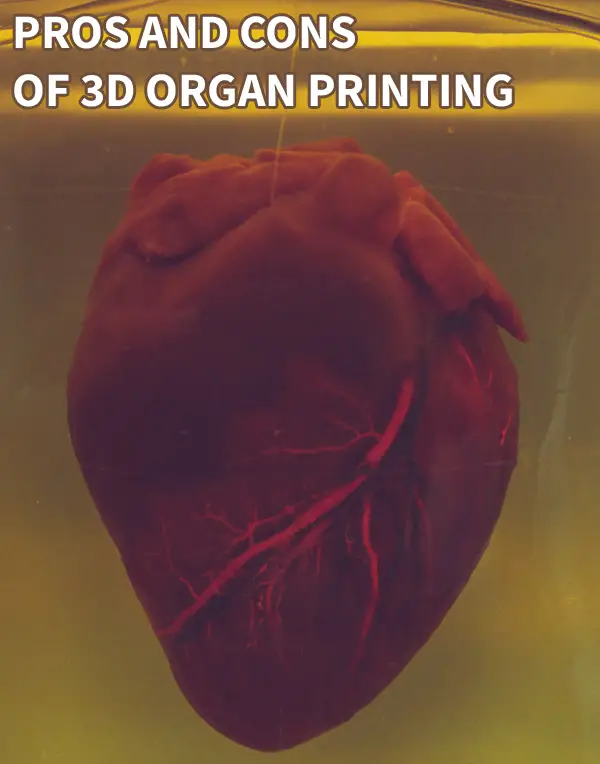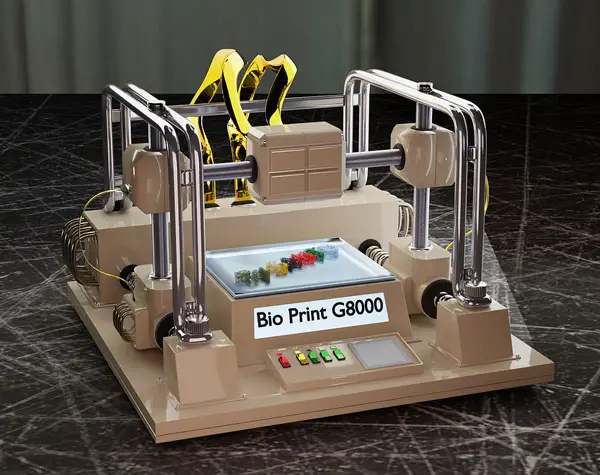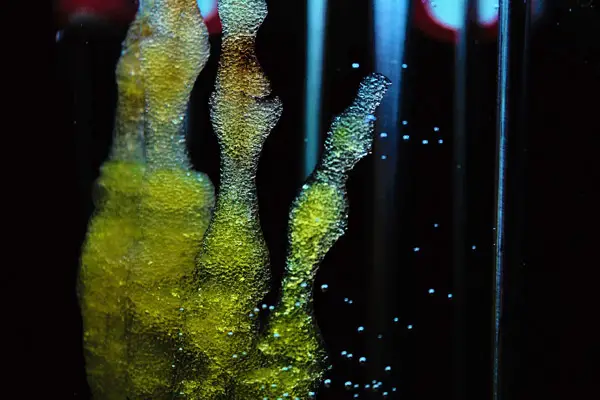There are around 106,565 patients on the organ waitlist in the United States alone. About 17 patients die each year waiting for an organ. The disparity between the organ supply and demand for organ transplantation is a very well-known fact, and it doesn’t seem that it will be resolved anytime soon.
In a scenario like this, what if someone tells you that organs could soon be successfully printed in a lab? This is exactly what 3D-bioprinting an organ is. We are at a point in scientific advancement where this is a possibility.

A 3D-printed organ would have many applications, especially in the healthcare industry. Let’s discuss the pros and cons of 3D organ printing.
Pros of 3D organ printing include use in organ transplantation, tissue repair, for teaching purposes, in disease and pharmaceutical research, and reduction of organ trafficking. Potential cons of 3D organ printing include lack of affordability, technical challenges before mainstream use, and unavailability in certain locations due to lack of dedicated establishments and skilled professionals. Lets get into the details.
We’ll explore these advantages and disadvantages in more detail in this article. But first, let’s explore what 3D bioprinting is and how it works.
What Is 3D-Bioprinting?
3D- bioprinting is similar to regular 3D printing— both of them print 3D structures. The only difference is that in 3D Bioprinting, living tissue is printed. Yes, you read it right— living cells are used to print the desired structure.
So, how do you print a living tissue using a printer?
A 3D bioprinter does exactly what a regular 3D printer does; i.e. print a 3D structure, layer by layer. But here, instead of using things like plastic, metal, ceramic, etc to create an object, a “bio-ink” is used. A bio-ink is created using cells (and sometimes stem cells) that are extracted from the patient.
The tissue is taken from the patient and kept in an incubator at a set temperature and duration, to allow the cells to multiply and grow.
Once enough cells are obtained, they are used to create the bio-ink– which is a mixture of these cells and a supporting material— like hydrogel, collagen, alginate, and other biopolymers. This supporting material allows these cells to stick together. It also provides firmness to the structure being printed. There may also be some other chemicals in the mixture that help similar cells find and interact with each other.
The bio-ink thus produced is loaded in the 3D bioprinter, and the desired organ/tissue is then printed. Once the organ is printed it can be transplanted in the patient. The supporting structure is later dissolved inside the body, leaving behind only the newly formed organ.
In addition to this, dedicated software is also needed. The software analyzes and designs the structure that needs to be printed. This information is then sent to the printer— to let the printer know what structure it needs to print.
Using this method, blood vessels, nerves, tissues, bones, and even an entire organ can be printed.
This is an amazing feat, as this technology can help solve the global crisis of the lack of organs for organ transplantation.
The Challenge With 3D-Bioprinting
3D-bioprinting an organ—however small— is indeed a great achievement. It has a lot of potential and we should be excited about it. But frankly, when it comes to using it on an actual human being, we still have a long way to go.
Currently, this technology is still in the development and trial stage. We might have to wait for a couple more decades to witness a 3D-printed heart being transplanted in a human. This is because, while extracting tissue from a patient, mixing it with hydrogel, and printing the organ may sound simple, it’s not that easy to do.
Printing an organ is one thing, but printing an organ that survives and performs its biological functions is another thing. For example, scientists had created a liver, but it could only survive for 5 days.
The main challenge with 3D bioprinting an organ is that organs are very complicated. Some tissues, like cartilages, are simpler structures, but complete organs can be difficult to print.
Scientists so far have successfully grown a complete bladder, a small heart (not large enough for humans), bones, cartilages, and skin. We might have to wait for a longer time to see organs like the liver, kidney, pancreas, and a full-sized heart being printed using a 3D printer, as these are quite complex structures.
So, yes, we are not there yet. But it’s a great start.
Techniques of 3D Bioprinting
Currently, we have a few techniques using which we can print an organ. They each have a different principle of operation and have their advantages and disadvantages.
Extrusion Printing
Extrusion printing involves the printing of continuous bioink filaments, layer by layer, to create a 3D structure. The bioink in this method contains hydrogel as the supporting material. Other materials that can be used are collagen, alginate, gelatin, etc.

Hydrogel is highly viscous, and therefore it smoothly passes through the nozzle of the printer— providing the cells a certain degree of protection while they are being passed through the nozzle. Solidification of the printed organ is done by various physical (heat application) or chemical methods.
The main issue with this technique is the lack of mechanical integrity— i.e. they don’t produce the most viable or the strongest of the structures. However, with experiments and modifications, scientists may be able to overcome this issue eventually.
Laser-Assisted Bioprinting
In this technique of bioprinting, a weak laser is used to control the movement of the particles in a solution.
This method requires a laser, a target plate (which is usually made up of quartz) coated with the bioink, and a receiving substrate. When the laser hits the quartz target plate containing the bioink, the laserjet transfers a small volume of bioink to the substrate. This way multiple layers of the organ or tissue are created.
However, this is a rather slow way to print an organ. Additionally, it has been found that the cells printed this way lose their viability quickly, and it can only be used to print a limited set of tissues. For these reasons, this is the least explored technique of bioprinting overall.
Microvalve Printing
The principle of microvalve printing involves droplet-based deposition of the bioink, where the fluids move under constant pneumatic pressure. The ink is delivered through a nozzle with a valve that is mechanically, electrically, or magnetically controlled.
Micro valve printing involves the printing of a collagen solution followed by a layer of the cell. First, the collagen is printed. Then for gelation pH change is induced by spraying sodium bicarbonate. Following this, a layer of the cell is deposited in the layer of collagen. This method promotes high cell viability.
Inkjet Printing
This again includes droplet-based printing, where the ink is delivered using picoliter ink droplets. This can be of 2 types:
- Continuous inkjet: a steady stream of droplets is delivered through a nozzle.
- Drop-on-demand inkjet: ink produced only when required.
Inkjet printing was the first way to be utilized to print a tissue. Interestingly, the inspiration for it was a regular HP inkjet printer. The only difference is that the nozzle used to deliver the ink for bioprinting is larger than the regular HP inkjet printer.
Structures printed using this method also show high viability of the cells.
Another important feature of an inkjet printer is that it can print multiple cell types using different nozzle heads simultaneously. This feature could allow scientists to create more complex structures containing a variety of different cells.
Tissue Fragment Printing
Tissue fragment printing is the combination of bioprinting and the ability of various cells to self-assemble to form a tissue. This process lets nature take its course.
Tissue fragments containing embryonic cells are deposited in spheroids and kept close to each other.
The embryonic cells kept close to each other fuse together to then form the structure based on their innate abilities.
This again is a slow process of creating an organ, and only small structures can be created using this method.
Post- Bioprinting Incubation
After printing of the tissue or the organ, it is kept for incubation to allow better attachments of the cells. It has been found that the longer the incubation period (21 days), the better the strength of the structure because of tissue development.
The incubation of the printed structure can be done in cell culture (static) or using a bioreactor (dynamic). Dynamic method of incubation results in more tensile strength, and therefore is more ideal for structures like cartilages and bones, where tensile strength is of great importance.
Once the tissue/organ is strong enough and well-formed, it can be put in the human body.
Advantages Of 3D-Bioprinting
Organ Transplant
Given that there is a huge lag between the supply and the demand for organs for organ transplantation, 3D-bioprinting can be a great boon for the healthcare industry.
The organ can be created as per the demand and that too in a very short period. There won’t be a long waitlist and patients won’t have to wait for months and years on end to get an organ.
Additionally, because the tissue will be obtained from the patient, the rate of rejection will be much lower, if at all.

Tissue Repair
In addition to a full organ transplant, this technology can also be used for tissue repair and grafting. A few examples would include:
- Skin grafting in a patient of burns. Currently for skin grafting, the piece of skin is obtained from another area of the patient’s body. However, if the percentage of burn is towards the higher end, obtaining enough skin from the same patient can be difficult. In these cases, we can use this technology to create new skin from a patient’s skin and use it for grafting.
- Repair of cartilaginous structures like smashed nose and ear, and bone for bone grafting following accidents could be another area of use for this technology.
- Additionally, specific parts of an organ could be created using bioprinting. Like, creation of heart valves for valve replacement.
Teaching Purposes
Another great use of this technology can be printing various structures like organs and vessels to provide physicians and surgeons an actual tissue to practice various procedures, before performing the same in a patient.
While practicing in a cadaver and models are helpful, an actual organ would be a step up, which will allow the doctors and medical students to get the real feel of an actual organ.
Research Purposes
In addition to using bioprinting for teaching purposes, research is another field where this technology can be used. Scientists would be able to study the disease pathogenesis, progression, and its effect in an actual organ, without having to sacrifice many animals or experimentations in humans.
Similarly, the pharmaceutical industry can benefit too, as they can study the effect of new drugs in these living organs.
Organ Trafficking
Lastly, if the crisis of the lack of organs for organ transplantation is eliminated, hopefully, this technology will bring down the rates of organ trafficking indirectly.
Disadvantages Of 3D-Bioprinting
Currently, this technology is in the very early stages of development, and so it’s difficult to predict what could be the possible disadvantages of this technology from the patient’s point of view. As of now, a few possible disadvantages that could be thought of are:
It May Not Be Affordable And Accessible To Everyone
As with most of the new technologies, 3D-bioprinting may not be accessible to all. Since this technology needs specific instruments and technology in place before one can print an organ using it, not every country and every healthcare facility may be able to have it— at least in the initial years.
Affordability is yet another matter of concern. Although, the cost of printing an organ would be less than the cost of obtaining an actual organ the usual way. Still, it’s safe to assume that it’s most likely not going to be a very budget-friendly technology for most people. This is just an assumption, however. We’ll have to wait for the technology to come into the real world healthcare industry to know anything for sure.
It Is A Complex Procedure
Not all organs are easy to print. Complex organs are difficult to print artificially. Scientists have successfully printed some organs, but the printing of organs like the liver, kidneys, pancreas, and heart is going to take a much longer time.
In addition to the complexity of the organ, creating a stable bioink and a technique that will provide a good support structure to the growing cells, and will ensure cell viability is yet another challenge that scientists are currently facing. The current techniques need further modification to be able to print an organ successfully that is suitable for organ transplantation.
Requirement Of Skilled Professionals And Establishments
3D bioprinting is not going to be a mobile technology– at least in the initial years and for most organs. While mobile 3D printing is likely possible for skin grafting etc, for growing proper, full-sized organs, institutes will have to set up dedicated establishments and bring in the instruments and the technology. Additionally, the maintenance of this technology will be an added requirement. Therefore, they may not be available everywhere.
Also, this technology will require highly skilled professionals to operate this delicate technology, as minor mistakes would affect the outcome greatly.
At the end of the day, these administrative challenges will be reflected in the pricing and availability of the procedure, and therefore affect affordability and accessibility.
Below is an interesting video on 3D printing organs:
What We Know So Far
3D organ printing is a very sophisticated technique, which could solve the major lack of organs needed for transplantation worldwide. While scientists are off to a good start, we still have a long way to go.
There are many pros to this technique, if successful. Only a few cons can be thought of as of now. However, the pros outweigh the cons.
A lot of work still needs to be done, but now with this upcoming technology, we can hope to see a world where no one will die waiting for an organ.
To know more about 3D-Bioprinting and its costs you can read this article: How much does 3D printing organs cost? The actual numbers.
